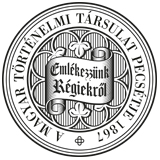Századok – 2016
2016 / 2. szám - KÖZLEMÉNYEK - Gyöngyössy Márton: Főúri pénzverési jogosultak a 15. századi Magyarországon
368 GYÖNGYÖSSY MÁRTON ARISTOCRATS WITH COINAGE RIGHTS IN FIFTEENTH-CENTURY HUNGARY by Gyöngyössy Márton (Summary) Sigismund of Luxemburg granted coinage rights to several aristocrats. Some came to possess important mints with impressive past record, while others were offered a possibility to set up a completely new minting house. Yet none was ever authorised to mint coins of his own in the mint thus obtained. Consequently, it is more correct to refer to the license granted by the king as a right of minting rather than as an autonomous right of coinage, which remained a manifestation of sovereignty, let alone as a private coinage. In the course of the fifteenth century, four major groups groups can be distiguished among the beneficiaries of the royal licenses. Sigismund himself and his immediate successors tried to further support the lords who had a vested interest in the defense of the borders („defenders of the borders”). Wladislas I and John Hunyadi identified the bishops, who attended the king’s coronation of 1440 in almost full numbers, as a crucial support group, and accordingly rewarded them with minting rights („crowning bishops”). After the tragic death of the king at Varna in 1444, the country was for some time governed by elected captains, some of whom also provided for a continuation of coinage. And finally, in 1459/1460-ban emperor Frederick III tried to win over some magnates in Western Hungary by granting them minting rights („Paladine”). The system of delegated magnate coinage, which had been introduced by Sigismund, came to an end under Matthias Corvinus. In the framework of a comprehensive financial reform, Hungarian coinage was also fundamentally reorganised, whereby the functioning of the minting chambers became both better regulated and more effective.
